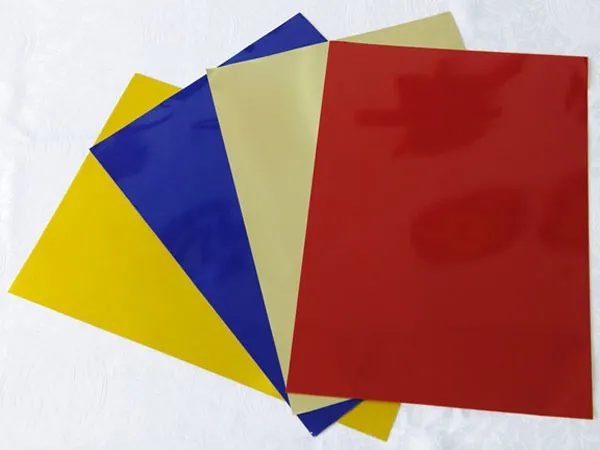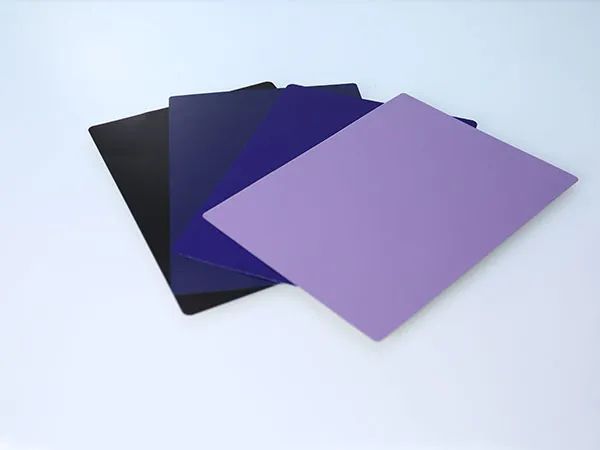2025-10-28 11:53:45
Coated aluminum sheets are widely used in modern construction, transportation, electronics, and industrial applications due to their excellent performance, durability, and aesthetic appeal. With numerous surface treatment technologies available on the market, selecting the right coated aluminum sheet for your specific project can be challenging. This guide explores the most common surface treatments, helping you make an informed decision.
Surface coatings are not just for aesthetics—they provide an essential protective barrier that shields aluminum from corrosion, UV exposure, abrasion, and chemical damage. Different coating technologies offer varying levels of weather resistance, color stability, mechanical strength, and cost-effectiveness, making the right choice crucial for long-term project performance.

Polyester coating is one of the most widely used and economical finishes for aluminum sheets. It offers good adhesion, a wide range of colors, and excellent workability.
Key Features:
Cost-effective: Ideal for projects with limited budgets.
Rich color options: Available in multiple gloss levels and finishes.
Easy to process: Suitable for bending, stamping, and cutting.
Applications:
Indoor decoration, signage, standard building facades, and other environments with low durability requirements.
PVDF coatings represent the high-performance class of aluminum finishes. They are known for exceptional durability, corrosion resistance, and long-lasting color stability.
Key Features:
Outstanding weather resistance: Performs well under strong UV radiation, acid rain, and salt spray.
Excellent corrosion resistance: Resists industrial pollutants and harsh chemicals.
Long-lasting color retention: Resistant to fading and chalking.
Self-cleaning surface: Smooth finish minimizes dust accumulation, making cleaning easy.
Applications:
Outdoor curtain walls, roofs, bridges, tunnels, and buildings in coastal or industrial areas requiring superior durability.
Epoxy coatings provide excellent adhesion and chemical resistance, often used as primers or protective layers in industrial environments.
Key Features:
Strong adhesion: Bonds tightly to aluminum substrates.
High hardness and abrasion resistance: Protects against wear and mechanical damage.
Chemical resistance: Resistant to acids, alkalis, and solvents.
Applications:
Industrial equipment, storage tanks, pipelines, and as a base layer for high-performance topcoats.
Polyurethane coatings combine flexibility with durability, providing a balance between mechanical strength and weather resistance.
Key Features:
Good flexibility: Resists impacts and deformation.
Excellent abrasion resistance: Tough surface reduces scratches.
Better weather resistance than PE: Suitable for various outdoor applications.
Gloss and color retention: Maintains appearance over time.
Applications:
Transportation equipment, marine structures, machinery, and outdoor signage requiring both aesthetics and durability.

When selecting a coated aluminum sheet, consider these key factors:
Budget: PE coatings are cost-effective, while PVDF coatings offer long-term value despite higher initial cost.
Environment: Indoor or outdoor use? Will the aluminum be exposed to moisture, salt, or chemicals?
Expected lifespan: How long should the coating maintain its performance and appearance?
Aesthetic requirements: Desired color, gloss, and surface texture.
Fabrication needs: Will the sheet require bending, stamping, or other complex processing?
Each type of coated aluminum sheet offers unique advantages. Understanding their properties and suitable applications is essential for project success. Whether you are looking for affordable indoor panels or high-durability outdoor facades, choosing the right surface-treated aluminum sheet ensures long-lasting performance, corrosion protection, and visual appeal.
For professional advice or customized solutions tailored to your project, contact our expert team—we provide guidance to help you select the most suitable coating for your specific requirements.